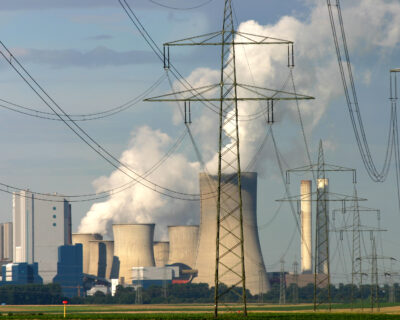Blogs

Use of Non-Sparking Tools: Ensuring Safety in Hazardous Environments
Safety is paramount in hazardous workplaces, especially where flammable gases, liquids, or dust are present. One of the most effective ways to prevent fires and explosions is by using non-sparking tools—specifically designed to eliminate the risk of accidental ignition. In this comprehensive guide, we’ll explore everything you need to know about non-sparking tools, their benefits, applications, and why they are indispensable in high-risk industries.
What Are Non-Sparking Tools?
Non-sparking tools, also known as spark-resistant tools, are made from non-ferrous metals such as:
- Copper alloys
- Aluminum bronze
- Beryllium copper
These tools do not produce sparks when they strike other metal surfaces, making them essential in environments with flammable substances. They are often required by law to ensure worker safety and regulatory compliance.
Benefits of Non-Sparking Tools
1. Reduce Fire and Explosion Risks
The primary benefit is the elimination of sparks, reducing the chance of fires or explosions in areas with combustible materials.
2. Minimize Worker Injury
By preventing spark-related incidents, these tools protect workers from serious injuries in high-risk environments.
3. Ensure Compliance with Safety Regulations
Compliance with safety standards such as:
- OSHA 29 CFR 1910.242
- ANSI B107 Committee Standards is easier with non-sparking tools, helping businesses avoid legal penalties.
4. Boost Productivity
A safer environment leads to fewer interruptions, allowing teams to work efficiently without constant concern for safety hazards.
Key Applications of Non-Sparking Tools
Non-sparking tools are essential in several high-risk industries, including:
- Oil & Gas Exploration: Used during drilling, maintenance, and repairs in flammable environments.
- Chemical Manufacturing: Prevent ignition when handling volatile chemicals.
- Mining & Metallurgy: Used where explosive gases may be present underground.
- Aerospace & Defense: Ideal for handling flammable materials in production and maintenance.
- Shipbuilding & Marine: Safe for use in confined spaces prone to flammable vapors.
- Automotive & Transportation: Used in manufacturing and repair operations involving flammable substances.
Why Choose Non-Sparking Tools?
Preventing Catastrophic Accidents
Even a single spark can cause an explosion. Non-sparking tools remove this risk, creating a safer workplace.
Non-Sparking vs. Regular Tools
- Regular tools (ferrous metals): Can produce dangerous sparks.
- Non-sparking tools: Crafted to eliminate spark generation—ideal for volatile environments.
Types of Non-Sparking Tools
🟠 Copper Alloy
- Often includes beryllium for extra durability.
- Perfect for use in gas-rich environments.
🟤 Aluminum Bronze
- Contains aluminum and small amounts of nickel.
- Highly resistant to friction and corrosion.
🔵 Beryllium Copper
- Resistant to wear, static, and friction.
- Suitable for long-term use in demanding conditions.
How to Choose the Right Tool
When selecting non-sparking tools, consider:
- Material Compatibility: Choose a tool material that suits the work material.
- Type of Task: Use cutting tools for cutting, striking tools for impact, etc.
- Work Environment: Account for temperature, humidity, and corrosive elements.
- Tool Specifications: Make sure the size and shape are fit for the task.
Safety Tips for Using Non-Sparking Tools
- Inspect Tools Before Use
Check for wear or damage regularly. - Use the Right Tool for the Job
Improves efficiency and reduces risk. - Avoid Modifications
Altering tools may compromise their spark-resistant properties. - Proper Storage
Keep in a cool, dry place to prevent corrosion. - Wear Protective Gear
Always use appropriate PPE like gloves and goggles. - Follow Safety Guidelines
Adhere to workplace safety standards and best practices.
Regulatory Compliance
Stay compliant with:
- OSHA 29 CFR 1910.242 – Ensures safe use of hand tools.
- ANSI B107 – Sets standards for manufacturing/testing spark-resistant tools.
- Industry-specific regulations – Especially in chemical and oil & gas sectors.
Being compliant helps protect workers and avoid legal penalties.
Conclusion
In high-risk industries, non-sparking tools are more than just a precaution—they are a necessity. From reducing fire risks to meeting legal safety standards, these tools provide unmatched protection in volatile environments.
Whether you’re operating in oil fields, chemical plants, or underground mines, investing in non-sparking tools helps you:
- Protect your workforce
- Stay compliant with safety standards
- Improve operational efficiency
Frequently Asked Questions (FAQs)
Q1. Are non-sparking tools more expensive than regular tools?
Yes, but the added safety and compliance justify the investment.
Q2. Can they be used in wet environments?
Yes, but always dry them thoroughly after use to prevent corrosion.
Q3. Are they legally required in certain industries?
Yes. Especially in oil, gas, and chemical sectors where fire hazards are present.
Q4. Can they be used on any material?
No. Use them only on compatible materials to avoid reducing their effectiveness.
Q5. How often should they be inspected?
Before each use and at regular intervals to check for wear and damage.
Q6. What materials are commonly used?
Copper alloys, aluminum bronze, and beryllium copper.
Q7. Do they require special maintenance?
Yes. Clean, dry, and store properly to maintain effectiveness.
Q8. Can they be sharpened or modified?
No. Modifications compromise safety and should be avoided.
🔗 Discover more on our website https://domadia.net/contact/




